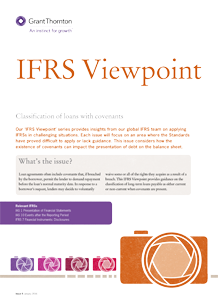-
Business consulting
Our business consulting services can help you improve your operational performance and productivity, adding value throughout your growth life cycle.
-
Business risk services
We can help you identify, understand and manage potential risks to safeguard your business and comply with regulatory requirements.
-
Data analytics center
Unlock the power of data with our expert Data Analytics team. We are a dedicated group of professionals who are passionate about harnessing the potential of data to drive informed decision-making and business growth. With our extensive knowledge and cutting-edge tools, we provide comprehensive data analysis solutions tailored to meet your specific needs.
-
Asset management
Grant Thornton’s profound experience and deep knowledge of asset management (AM) systems and registers development is based on successful implementation of large scale and complex projects in CIS region and beyond its borders.
-
Human capital advisory
Grant Thornton Armenia's human capital advisory services are designed to deliver the results you want throughout the entire lifecycle.
-
Sustainability and ESG advisory
Embark on a transformative journey with our comprehensive Sustainability and ESG services, designed to support your organization's sustainability transition and drive a meaningful impact.
-
Recovery & reorganisation
We provide a wide range of services to recovery and reorganisation professionals, companies and their stakeholders.
-
Transactional advisory services
We can support you throughout the transaction process – helping achieve the best possible outcome at the point of the transaction and in the longer term.
-
Cybersecurity
Grant Thornton will assist you with raising the level of your protection, offering services in the area of cybersecurity.
-
IFRS
At Grant Thornton, our IFRS advisers can help you navigate the complexity of financial reporting.
-
Audit quality monitoring
Having a robust process of quality control is one of the most effective ways to guarantee we deliver high-quality services to our clients.
-
Global audit technology
We apply our global audit methodology through an integrated set of software tools known as the Voyager suite.

-
Legal advisory
Legal advisory involves a wide spectrum of corporate legal consultancy ranging from incorporation and liquidation matters, legal representation, litigation, ad-hoc legal advice, provision of legal opinions to execution of due diligence and structuring deals from a legal viewpoint.
-
Business process solutions
Our business process solutions team provides a range of services to support clients of all sizes, from small to medium enterprises (SMEs) through to the largest international businesses.
-
Tax advisory
We advise our clients on all aspects of corporate tax strategy development and tax planning, tax issues arising from formation or acquisition of a company and provide an overview of local and international perspectives.
-
Energy & environment
Energy and resources markets worldwide are undergoing major changes. With growing energy demand, developments in new forms of energy and the need to invest in a sustainable future, significant shifts in these sectors are taking place all over the world. At Grant Thornton, we can help you prepare for these changes and stay one step ahead of your competitors.
-
Oil & gas
Oil & gas
-
Mining
Rising operating costs, challenging capital markets and falling commodity prices are putting miners to the test worldwide, but dynamic companies can still thrive. At Grant Thornton, we can help you make the most of these opportunities and unlock your potential for growth.
-
Private equity
We bring together international teams from corporate finance, restructuring and turnaround, taxation and assurance services that provide bespoke solutions – from investment, through the growth phase to exit.
-
Asset management
Grant Thornton’s profound experience and deep knowledge of asset management (AM) systems and registers development is based on successful implementation of large scale and complex projects in CIS region and beyond its borders.

Loan agreements often include covenants that, if breached by the borrower, permit the lender to demand repayment before the loan’s normal maturity date. In response to a borrower’s request, lenders may decide to voluntarily waive some or all of the rights they acquire as a result of a breach. This IFRS Viewpoint provides guidance on how the presence of covenants, breaches and waivers can impact the classification of long-term loans payable as either current or non-current.
The classification of a long-term loan payable as a current or non-current liability is based on a snapshot of the existing rights of the borrower and lender at the reporting date:
- when a borrower has the right to defer settlement for at least 12 months beyond the reporting date, a loan is classified as non-current
- the anticipated outcome of future covenant tests (based on financial conditions existing after the end of the current reporting period) does not influence the classification of a loan at the reporting date
- when assessing the impact of waivers, it is important to consider both the timing of the waiver and how it affects the rights of the parties at the reporting date. Waivers received after the reporting date are ignored when assessing a loan's classification at the reporting date
- whether or not a breach has ben reported to the lender is irrelevant.
Our Viewpoint explores these issues in more detail and works through a number of practical examples. We also explore what happens when a lender issues a waiver, but in exchange requires the borrower to agree to an additional covenant assessment falling within the next 12 months. In each case we assume that a breach of a borrowing covenant entitles the lender to require repayment on demand.
Read full report


